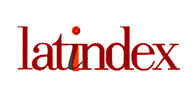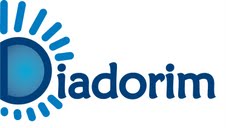ATUALIZAÇÃO DO DIAGNÓSTICO, CLASSIFICAÇÃO E TRATAMENTO PARA DIABETES MELLITUS (DM)
DOI:
https://doi.org/10.13037/rbcs.vol1n1.497Keywords:
diabetes, tratamento, classificação.Abstract
Nos últimos anos, com o avanço científico e tecnológico,
novos mecanismos relacionados à etiogenopatia
do diabetes mellitus foram elucidados. Uma das
conseqüências baseadas na nova classificação da
etiologia e patogenia foi desenvolvida pela American
Diabetes Association (1997). Conseqüentemente,novos métodos de diagnóstico e valores referencias
foram definidos. Assim, esse estudo discutirá a nova
definição, classificação e critérios de diagnóstico
laboratorial e tratamento do diabetes mellitus.
Downloads
References
1. National Diabetes Data Group. Classification and diagnosis
of diabetes mellitus and other categories of glucose
intolerance. Diabetes 1979; 28:1039-1057.
2. The Expert Committee on the Diagnosis and Classification
of Diabetes Mellitus: Report of the expert committee on the
diagnosis and classification of diabetes mellitus. Diabetes
Care 2002; 235 Suppl. 1:S5-S20.
3. Sociedade Brasileira de Diabetes. Diagnóstico e
classificação do diabetes mellitus e tratamento do diabetes
mellitus tipo 2. Disponível em: www.diabetes.org.br/
consenso/index.html. Acesso em: 25 de julho de 2002.
4. KAHN, S.E. Beta cell failure: causes and consequences.
Int J Clin Pract Suppl 2001; (123):13-8.
5. HUNTER S.J.; GARVEY, W.T. Insulin action and insulin
resistance: diseases involving defects in insulin receptors,
signal transduction, and the glucose transport effector
system. Am J Med 1998; 105(4):331-45.
6. Sociedade Brasileira de Diabetes. Detecção e tratamento
das complicações crônicas do diabetes mellitus. Disponível
em: www.diabetes.org.br/Diabetes/compcron.html. Acesso
em: 25 de julho de 2002.
7. ATKINSON, M.A.; MADAREN, N.K. The pathogenesis of
insulin dependent diabetes. N Engl J Med 1994;
331:1428-1436.
8. ZIMMET, P.Z.; TUOMI,T; MACKAY, I.R.; ROWLEY, M.J.;
KNOWLES, W.; COHEN, M.; LANG, D.A. Latent
autoimmune diabetes mellitus in adults (LADA): the role of
antibodies to glutamic acid decarboxylase in diagnosis and
prediction of insulin dependency. Diabet Med 1994;
11(3):299-303.
9. REAVEN, G.M.; BERNSTEIN, R.; DAVIS, B.; OLESFSKY, J.M.
Nonketotic diabetes mellitus: insulin deficiency or insulin
resistance? Am J Med 1976; 60(1):80-8.
10. OLEFSKY, J.M.; KOLTERMAN, O.G.; SCARLETT, J.A. Insulin
action and resistance in obesity and noninsulin-dependent
type II diabetes mellitus. Am J Physiol 1982; 243(1):E15-30.
11. DE FRONZO, R.; DEIBERT, D.; HENDLER, R.; FELIG, P.;
SOMAN, V. Insulin sensitivity and insulin binding to
monocytes in maturity-onset diabetes. J Clin Invest
1979; 63(5):939-46.
12. TURNER, R.C.; HOLMAN, R.R.; MATTHEWS, D.;
HOCKADAY, T.D.; PETO, J. Insulin deficiency and insulin
resistance interaction in diabetes: estimation of their relative
contribution by feedback analysis from basal plasma insulin
and glucose concentrations. Metabolism 1979;
28(11):1086-96.
13. JONES, C.W. Gestational diabetes and its impact on the
neonate. Neonatal Netw 2001; 20(6):17-23.
14. VERMA, A.; BONEY, C.M.; TUCKER, R.; VOHR, B.R.
Insulin resistance syndrome in women with prior history of
gestational diabetes mellitus. J Clin Endocrinol Metab
2002; 87(7):3227-35.
15. REICHELT, A.J.; SPISCHLER, E.R.; BRANCHTEIN, L. et al.
Fasting plasma glucose is a useful test for the detection of
gestational diabetes. Diabetes Care 1998; 21:1246-
1249.
16. The Expert Committee on the Diagnosis and Classification
of Diabetes Mellitus. Report of the Expert Committee on
the Diagnosis and Classification of Diabetes Mellitus.
Diabetes Care 1997; 20:1183.
17. GORUS, F.K.; GOUBERT, P.; SEMAKULA, C.;
VABDEWALLW, C.L.; DESCHEPPER, J.; SCHEEN, A. IA-2
autoantibodies in new-onset iddm patients help predict
impending diabetes in their siblings. Diabetologia
1997; 40(1):95-99.
18. CHRISTIE, M.R.; ROLL, U.; PAYATON, M.A.; HATFELD,
E.C.I.; ZIEGLER, A.G. Validity of screening for individuals
at risk for type 1 diabetes by combined analysis of
antibodies to recombinant proteins. Diabetes Care
1997; 20 (6):965-970.
19. ZERBINI, G.; BAZZIGALUPPI, E.; MANGILI, R.; BOSI, E.;
BONIFACIO, E. Prevalence of GAD(65) and IA-2
autoantibodies in IDDM patients affected by diabetic
nephropathy. Diabetologia 1997; 40 (4) 485.
20. SEISSLER, J.; MORGENTHALER, N.G.; ACHENBACH, P.;
LAMPETER, E.F.; GLAVE, D.; PAYTON, M.; et al.
Combined screening for autoantibodies to glutamic acid
descarboxylase in first degree relatives of patients with
IDDM. Diabetologia 1996; 39(11):1351-1356.
21. MOHN, A.; DUNGER, D.B.; CHIARELLI, F. The potential
role of insulin analogues in the treatment of children and
adolescents with Type 1 diabetes mellitus. Diabetes Nutr
Metab 2001; 14(6):349-57.
22. MONH, A.; DUNGER, D.B.; CHIARELLI, F. The potential
role of insulin analogues in the treatment of children and
adolescents with Type 1 diabetes mellitus. Diabetes Nutr
Metab 2001; 14(6):349-57.
23. LIU, E.H.; HEROLD, K.C. Transplantation of the islets of
Langerhans: new hope for treatment of type 1 diabetes
mellitus. Trends Endocrinol Metab 2000; 11(9):379-
82.
24. HEINEMANN, L.; PFUTZNER, A.; HEISE, T. Alternative
routes of administration as an approach to improve insulin
therapy: update on dermal, oral, nasal and pulmonary
insulin delivery. Curr Pharm Des 2001;7(14):1327-51.
25. YAMAOKA, T. Gene therapy for diabetes mellitus. Curr
Mol Med 2001; 1(3):325-37.
AFIA
Downloads
Published
Issue
Section
License
Copyright (c) 2010 Eder de Carvalho Pincinato

This work is licensed under a Creative Commons Attribution-NonCommercial-NoDerivatives 4.0 International License.
Policy Proposal for Journals offering Free Delayed Access
Authors who publish in this magazine agree to the following terms:
- Authors maintain the copyright and grant the journal the right to the first publication, with the work simultaneously licensed under a Creative Commons Attribution License after publication, allowing the sharing of the work with recognition of the authorship of the work and initial publication in this journal.
- Authors are authorized to assume additional contracts separately, for non-exclusive distribution of the version of the work published in this magazine (eg, publishing in institutional repository or as a book chapter), with the acknowledgment of the authorship and initial publication in this journal.
- Authors are allowed and encouraged to publish and distribute their work online (eg in institutional repositories or on their personal page) at any point before or during the editorial process, as this can generate productive changes, as well as increase impact and citation of the published work (See The Effect of Open Access).








